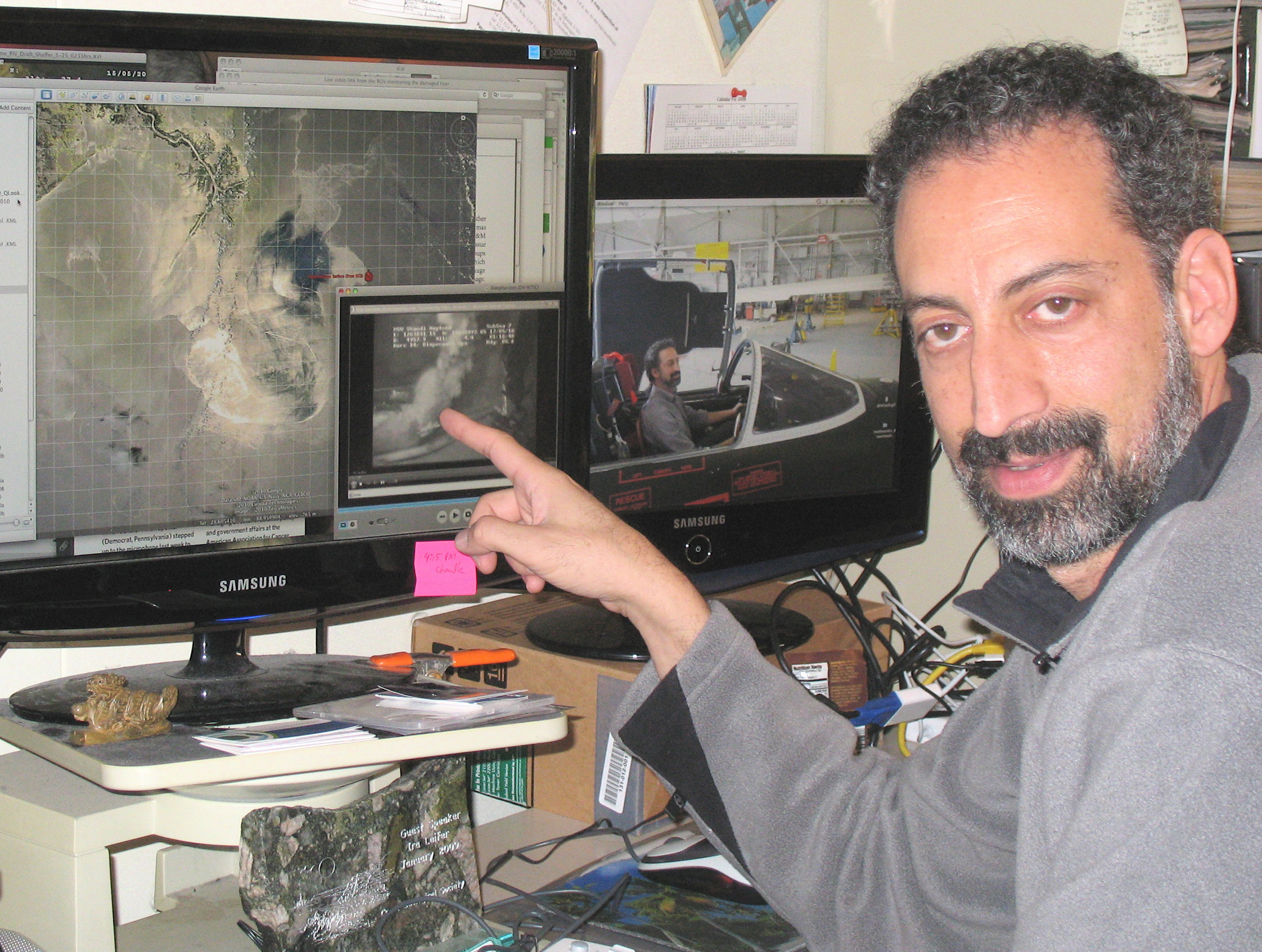
When the Obama administration announced this morning that the amount of oil leaking from the BP well in the Gulf of Mexico is far greater than previously disclosed, that statement was based on research conducted by a panel of government-appointed scientists that included Ira Leifer, a researcher in the Marine Science Institute at UC Santa Barbara.
The announcement revealed that studies by the experts have determined that 12,000 to 25,000 barrels of oil per day have been spewing from the blown-out well. That's about 500,000 to 1 million gallons of oil per day.
However, according to Leifer, who is principal investigator on one of the studies and co-investigator on another, the numbers disclosed by the administration are a range of "lower bound" estimates from scientists. In reality, he says the ongoing data analysis suggests the numbers likely are significantly higher.
"I don't really want to put an exact number on this, but it's safe to say that the total amount is significantly larger, from some fraction to multiples of that lower bound number," Leifer said. "I do not feel comfortable yet to provide an upper bound.
"These early estimates are basically early inventories of what we can observe or what BP has observed," he said. "We know that there are areas that have not been studied, while other areas lack confirmation from researchers outside BP. Thus, it is very likely that the total volumes spilled to date are much larger than today's released estimates, even if we do not have an upper estimate yet."
Even at the lower number, it's evident that the blowout of BP's Deepwater Horizon rig will be the country's worst environmental disaster –– far worse than the Exxon Valdez spill in 1989. The Valdez spilled 11 million gallons into Alaska's Prince William Sound. Even using the lower estimate, this blowout has spilled at least 18-28 million gallons of oil since the accident occurred.
"This is the worst oil spill ever, and it's probably the worst ever by a very significant amount," Leifer said. "All the media attention is based on a relatively minuscule amount of oil actually reaching the sea shore. The vast majority –– more oil than anyone can really imagine –– is still sitting out at sea, waiting for large storm systems to blow it on shore."
The scientists employed multiple methods to study the spill, including airborne remote sensing with NASA's Airborne Visible/Infrared Imaging Spectrometer (AVIRIS), video of the oil emanating from the seabed, and satellite data analysis. Leifer is the chief mission coordinating scientist for the NASA effort for airborne remote sensing of the Gulf oil spill. He's also one of the experts on the Flow Rate Technical Group, which worked on the study of seabed emissions.
"On these efforts, in each case, we are only able to come up with a best estimate on the part of the oil spill that we can observe at the time we make our observations," Leifer said. "However, the data and understanding of the physical processes and chemical processes of oil in the natural world, as well as the human efforts of BP and others to mitigate this oil spill, all clearly indicate that this is a conservative, lower bound number.
"What is missing completely is independent data –– calibrated experimental data –– that can be used to verify the total amount," he added. "The Flow Rate Technical Group, to date, has only about seven minutes of video showing a lot of variability from very low to very high flows, and is being asked to extrapolate seven minutes of BP low-quality video to three weeks. I am very uncomfortable taking a BP-selected time segment and concluding that it is representative of the emission rate over the entire time period. What should occur at every oil spill is the provision for scientists to independently monitor and observe the emissions such that high-confidence scientific estimates can be determined. To date, that has not occurred at the BP oil spill, despite requests from the scientific community."
The groups studying the impact of the oil spill include experts from NASA, the Coast Guard, the Minerals Management Service, the Department of Energy, the National Oceanic and Atmospheric Administration, USGS, and other academics from several universities including University of California, Berkeley, and University of California, San Diego. Leifer has spent a decade studying oil in the ocean. He is an expert on methane and hydrocarbon plumes in the ocean and has conducted extensive studies of the Santa Barbara methane seeps, as well as Arctic studies off Russia and Norway.
Leifer said he has made very clear to government representatives his opinion on the amount of oil spilled in the Gulf. "I have discussed my conclusions with U.S. government officials who have longstanding experience in oil spill estimation," Leifer said, "and they confirmed that my assessment is consistent with the best available scientific understanding of the behavior of oil in the ocean."
The full text of the 42-page draft report written by the experts on the Flow Rate Technical Group is available from UC Santa Barbara upon request.
Related Links



